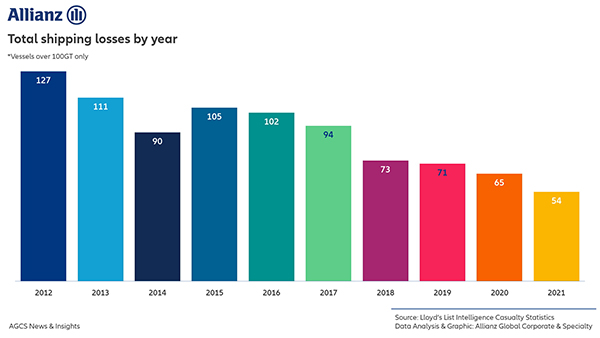 (Credit: AGCS)[/caption] One of the ways car carriers can catch on fire, according to AGCS, is if a vehicle in a cargo hold has a malfunction or electrical short circuit. Additionally, open decks can allow a fire to spread quickly. Further, the growing number of electric vehicles being transported by sea worsens the situation, as existing counter-measures might not be up to the challenge presented by an EV blaze, according to AGCS.
(Credit: AGCS)[/caption] One of the ways car carriers can catch on fire, according to AGCS, is if a vehicle in a cargo hold has a malfunction or electrical short circuit. Additionally, open decks can allow a fire to spread quickly. Further, the growing number of electric vehicles being transported by sea worsens the situation, as existing counter-measures might not be up to the challenge presented by an EV blaze, according to AGCS. Environmental concerns & rising salvage costs
Since car carriers hold expensive cargo, and salvage and pollution mitigation are costly, losses can pile up quickly. Environmental concerns are also driving up salvage and wreck removal costs, according to Khanna, who noted this is one way a manageable incident on a large vessel can end in a total loss. "Previously, a wreck might have been left in-situ if it posed no danger to navigation. Now, authorities want wrecks removed and the marine environment restored, irrespective of cost," Khanna said. The above slideshow highlights the regions that had the most total losses in 2021, according to AGCS. Related:
Want to continue reading?
Become a Free PropertyCasualty360 Digital Reader
Your access to unlimited PropertyCasualty360 content isn’t changing.
Once you are an ALM digital member, you’ll receive:
- Breaking insurance news and analysis, on-site and via our newsletters and custom alerts
- Weekly Insurance Speak podcast featuring exclusive interviews with industry leaders
- Educational webcasts, white papers, and ebooks from industry thought leaders
- Critical converage of the employee benefits and financial advisory markets on our other ALM sites, BenefitsPRO and ThinkAdvisor
Already have an account? Sign In Now
© 2025 ALM Global, LLC, All Rights Reserved. Request academic re-use from www.copyright.com. All other uses, submit a request to [email protected]. For more information visit Asset & Logo Licensing.








